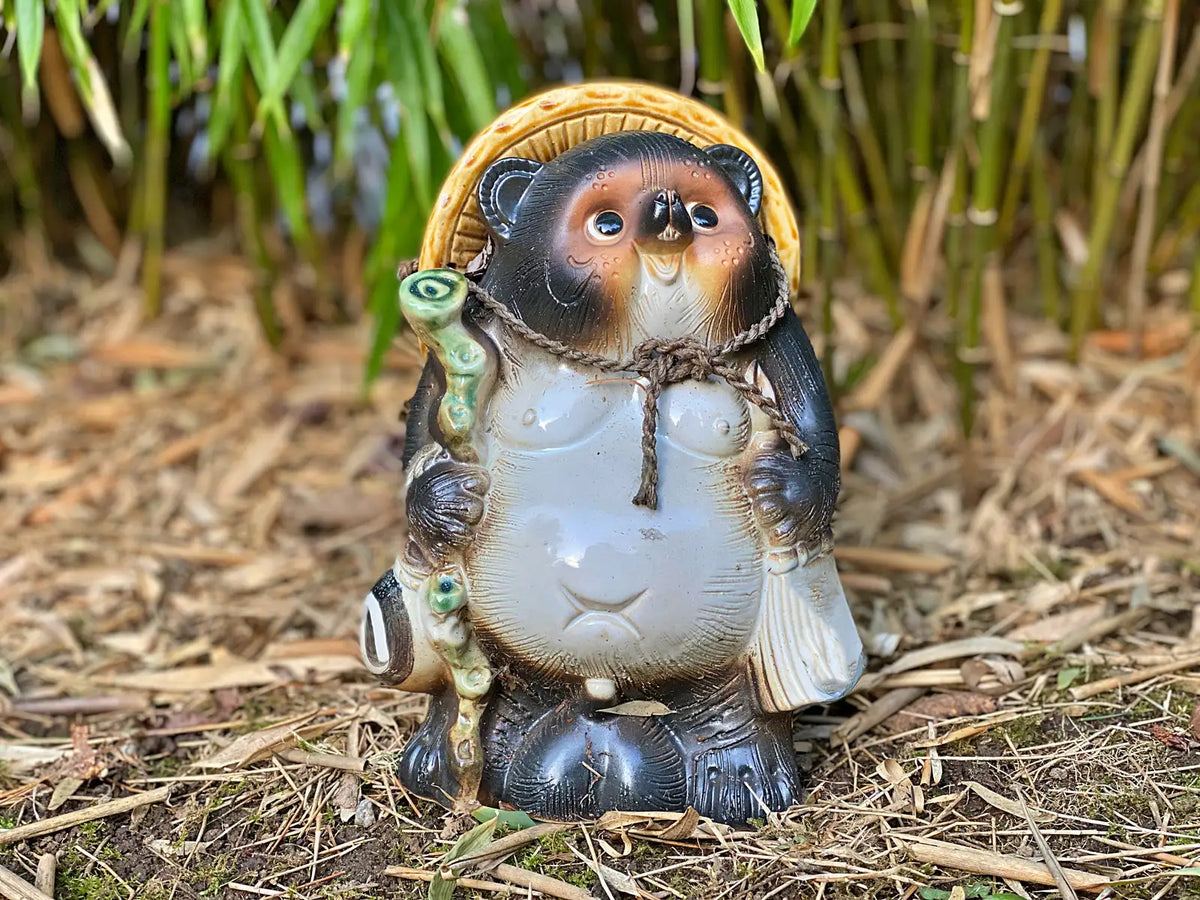

Curious travelers and cultural enthusiasts, prepare to be enchanted by the fascinating world of tanuki—Japan's delightful raccoon dogs. These creatures have captured the imaginations of locals and visitors alike with their whimsical presence in folklore, art, and modern popular culture. Let's explore the magic of tanuki and uncover why they hold a special place in Japanese heritage.
The Real Tanuki
Tanuki in Myth and Legend
Mythological tanuki are adored in Japanese folklore as playful tricksters (bake-danuki) rather than menacing monsters. Initially cast as bearers of mischief and omens, these shape-shifting creatures evolved into symbols of good fortune and merriment. Their legendary antics often involve transforming into objects or animals to bemuse humans. One story tells of a tanuki becoming a wine bottle, avoiding capture by rolling away when approached.
Among the most celebrated legends is "Bunbuku Chagama," where a tanuki transforms into a teakettle with magical abilities. This tale underscores the tanuki's cunning and charm, as it performs tricks for a peddler in exchange for a comfortable life. While their mischievous nature may cause humankind a bit of playful trouble, tanuki are ultimately seen as endearing and beneficial creatures.
Tanuki in Art and Culture
Tanuki have long been muses for Japanese artists. Traditionally, they are depicted with a leaf on their forehead symbolizing their connection to nature. Modern portrayals often emphasize their jovial spirits, featuring round bellies and accessories like straw hats, sake bottles, and IOU notes—playful nods to their love for fun and food.
A quirky aspect of tanuki imagery is their exaggerated anatomy, drawing from the practice of using tanuki hide to hammer gold leaf. This symbolism humorously represents financial prosperity, akin to stretching one's dollar.
The allure of tanuki has even inspired contemporary media. The Studio Ghibli film "Pom Poko" explores their camaraderie and determination to protect their forest home. Meanwhile, in "Super Mario Bros. 3," players can don a "tanooki suit" to gain special abilities like transformation and flight.
Tanuki in Modern Japan
Today, tanuki continue to be celebrated through various cultural products. Statues of these charming creatures are commonly placed outside businesses to attract prosperity. Their appeal extends to toys and gifts, with tanuki-inspired items like plush dolls and trinkets being popular souvenirs.
Additionally, many Pokémon characters draw inspiration from Japanese mythological creatures, including the tanuki. For instance, the Pokémon character “Takuni” shares traits with its folkloric counterpart, complete with a leafy head and raccoon-like features.



